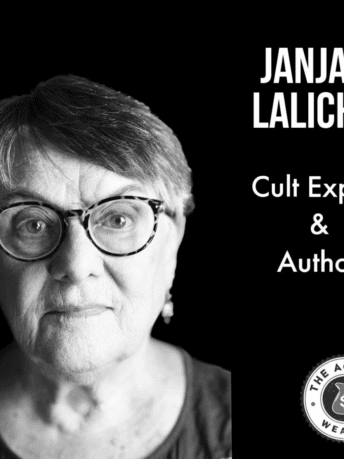By Luigi Corvaglia
My friend Vito is a smart guy. One day his 44-inch TV broke down. They told him that the repair would cost more or less 150 Euros. However, Vito thought it would be unprofitable to repair it as he could buy a new TV at a not much higher cost. So, he went to the shop and found a new television set similar to his own at a price of about 360 Euros. He noticed, however, that next to it there was another and larger one, 52-inch, at the cost of 450 Euros. It wasn’t such a big difference compared to a good increase in inches. In fact, he thought it would be better to come around to the idea of buying the larger TV, as the old one was a bit small for the size of the room it was in. Plus, as the salesman pointed out, it was also a technologically outdated model.
It was then suggested to him a new-generation device at a modest cost of 699 Euros. He bought it, but since the arm supporting the old 44″ could not hold the new 52″, he was forced to buy a new arm as well (moreover, he had to move a cabinet to make space for the new centre of attraction in the room). In short, a total cost of more than 700Euros based on the consideration that it was not worth spending 150 Euros on the repair.
This shift in preferences is reminiscent of that in Hans Kristian Andersen’s novel in which a farmer goes to the market to sell or trade his horse. Along the way, however, the farmer trades the horse for a cow because he likes it better than the horse; then the cow for a sheep, for the same reason; and so this with a goose, the goose with a hen, and the hen, finally, for a basket of rotten apples. The farmer would never have directly exchanged his horse for the apple basket and Vito would never have chosen to spend 700 Euros if this had been the only alternative option to the 150-euro repair. Similarly, the Scientology adept who is stopped in the street and offered a free self-improvement seminar would never have accepted directly the proposal to give all his earnings to the Church, but someone, after a long series of steps, does.
It’s not interesting that Vito came home with a greater good than he had planned and the farmer with a smaller one. What matters is that in both cases, the idea of the rational homo economicus acting in order to maximize his utility is hit hard. In fact, in the absence of a friend like Vito, the sociologist Jon Elster used Andersen’s novel as an example of the endogenous change of preferences. This is a phenomenon that can be formalized as follows: a person unconsciously adjusts his or her preferences in order to desire more intensely the goods that he or she has at that time in less quantity (Elster, 1983, p. 114). If he had only purchased the 44-inch television, Vito would not have returned with a new television, but rather without a 52-inch of the latest generation. It is a phenomenon connected to the time discount, which is the effect produced by the evaluation of the immediate benefits and the devaluation of the long-term effects, as anyone who went on a diet and succumbed to the first pastry knows well. An effect that marketing successfully uses, emphasizing it with the formulas “buy now, pay next year.”
All this is perfectly in line with the evidence brought forth by Daniel Kahneman and Amos Tversky, the so-called “Lennon and McCartney of Psychology,” who founded Behavioural Economics. They have displayed an incontrovertible amount of data in favour of the conception that human beings do not rationally choose the strategy that maximizes the chances of long-term victory (the expected utility of economists) but rather are interested in current gains and losses. Not only that, they fear loss more than they are attracted to gain and react in the opposite way if the same problem is put in the negative or in the positive. The latter phenomenon is known as framing or “context effect.” To explain it, I will use another of Vito’s bargains.
Recently my friend had to buy a gift for a loved one. He had decided to buy a smartphone and set a budget of 250 Euros. Since he also had to buy another gift for another friend, he decided to buy both items in the same store. He was initially persuaded to buy a phone whose full cost would have been 530 Euros at the price of 400. A discount of 130 Euros! So, he decided to buy an appliance for his friend and his choice fell on an air conditioning unit at the price of 399 Euros. The total cost would then have been about 800 Euros. But he was told that the price of the phone would be halved (i.e., only 200 Euros – or rather 199 – less than the budget) if the final expenditure had exceeded 900 Euros. So, he also bought a “Dolby Surround” amplifier system for his famous 52″ TV. Now he spent 1100 Euros to get the phone at a discount. This increase of his spending was justified by highlighting the cost savings on the phone. It’s like when the doctor proposes a treatment claiming its success rate to be at 30%, as opposed to highlighting that 70% of patients die. That is framing.
Kahneman and Tversky demonstrated this “context effect” (but it would be better to say “packaging effect”) with the famous “Asian disease” test. Experimental subjects were presented with a scenario in which a deadly virus threatened to kill 600 people. Two alternative lines of action were proposed to two groups.
Group 1 was asked to choose between the following options:
Program A: If followed, it leads to the salvation of 200 people.
Program B: If adopted, it involves a probability of 1/3 that 600 people will be saved and a probability of 2/3 that no one will be saved.
Group 2 had to choose between:
Program C: If adopted, 400 people will die.
Program D: If followed, there is a probability of 1/3 that no one will die and a probability of 2/3 that 600 people will die.
The results show that most people thought that A was preferable to B, but that D was preferable to C. The strange thing is that A is the exact equivalent of C, while B is identical to D. The programs were just presented differently. We are all Vito.
When they asked Amos Tversky if he and Daniel Kahneman were dealing with artificial intelligence, he said, “No, we are dealing with natural stupidity.” Well, we can say that Daniel Kahneman won the Nobel Prize for Economics in 2002 for having demonstrated, together with his reliable friend Amos Tversky (in that year already deceased), this “natural stupidity.” Their studies definitively ousted the austere rational individual dreamt up by the neoclassical economy and replaced him with a more sympathetic character: Vito.
Obviously, fun-loving Tversky did not want to insult all the Vitoes of the world by calling them stupid. But for the simple fact of being precisely “natural,” this “stupidity” is democratically distributed to each individual. The fact that each of us imagines ourselves exempt from it is perhaps the most evident demonstration of this socialization and is called “third person effect.” Vito is anything but stupid. He is one of the most intelligent people I know.
The Lennon and McCartney of Psychology gave the final shove to the homo economicus, this individual who weighs his choices on the basis of a rational calculation between costs and profits in view of the “maximization of his own utility.” The first shoulder push was given by another psychologist who won a Nobel Prize for Economics, Herbert Simon (Models of man: social and rational, 1957), precisely for his studies on “bounded rationality.” This reduced capacity is due to the computational limits of the brain, which means that our choices are always suboptimal. Tversky and Kahneman (Prospect Theory: An Analysis of Decision Under Risk, 1979) broke down the pedestal of the rational individual showing beyond any doubt how human choices systematically violate the principles of economic rationality not only for computational deficits, but also for real computational errors. In fact, the use of intuitive mental shortcuts called heuristics involves systematic errors, a sort of “system bug,” known as bias. When nEuroscientist Antonio Damasio (L’Errore di Cartesio, 1994) burst onto the scene to explain to us that no rationality and no choice unrelated to emotion is possible, the statue and pedestal of this character had already been on the ground for a while.
The so-called Rational Choice Theory (RCT) has therefore long since shared the fate of homeopathy and other theories and disciplines discredited but followed by a niche of people indifferent to the scientific method. This has great practical relevance. Affirming rational choice, in fact, implies denying manipulation. It is the rhetoric of “free choice.” It follows that the mass suicide of Jonestown, carried out by the faithful of the political-spiritual cult of the Reverend Jim Jones and which led to the death of almost a thousand people in 1978, would have been accomplished by the simultaneous cost-benefit calculation of more than 900 people who came to the conclusion that death maximized their utility.
It was already in the 16th century when Étienne de La Boétie, in his Address on Voluntary Servitude, warned us that tyranny is generally not imposed, but is consensually accepted by the people. Does this imply that choice is really free, rational, and aimed at maximizing one’s own utility? According to the faithful of the TSR, yes. Vito is in good company with some Nobel laureates in saying no.
The techniques of cultural and political propaganda are similar to the marketing strategies we have seen. They use many of the cognitive biases that are being studied in behavioural economics. Saying this is not denying personal responsibility for individual choices but rather is highlighting how these choices can be influenced by intrinsic and extrinsic factors. These obviously play a role in any form of persuasion, but this does not mean that we should support the bold thesis of some who say that there are no forms of undue persuasion. In fact, what is reprehensible in a work of conviction is not the “technique” used, but its end. Sometimes the end is fraudulent and exploitative. To pursue a “secret agenda” aimed at the exploitation of those who are persuaded to make choices contrary to their own interests can certainly be defined as “manipulation.” That the real man is prone to systematic errors that can lead to counterproductive choices is certainly helpful to those who intend to be maliciously persuasive. Charismatic cult leaders are able to lead their followers into a frame in which their irrational decisions make perfect sense to them.
The curious thing is that the main theory used by some sociologist devotees of rational choice to defend every type of cult, even totalitarian, is the Theory of Religious Economy (TER). This reading (Stark, 2007) supposes that the religious one is a market like that of goods. In practice, the various faiths would be products offered by religious firms in competition with each other, and the faithful would be consumers who make choices on the basis of their rational calculation. They choose freely and therefore everything is okay. It is strange that a conception that sees faith as a market does not take into account the basic marketing concepts mentioned above, does not contemplate misleading advertising, and takes the absolute honesty of each seller for granted. What market is it? Not the one Vito knows.
References
Damasio, A R. L’errore di Cartesio. Milano: Adelphi edizioni, 1995, p. 404.
De La Boétie, E. Discorso sulla servitù volontaria. Milano: Jaca Book, 1979.
Elster, J. Sour Grapes: Studies on Subversion of Rationality. Cambridge: Cambridge University Press, 1993.
Kahneman, D., & Tversky, A. Theory: A Prospect Theory: An Analysis of Decision under Risk. Econometrica, vol. 47, no. 2, March 1979, pp. 263-292.
Simon, H. Models of Man: Social and Rational. Mathematical Essays on Rational Human Behavior in a Social Setting. New York: Wiley, 1957.
Stark, R. Discovering God: The Origins of the Great Religions and the Evolution of Beliefs. San Francisco: HarperOne, 2007.
Tversky, A., & Kahneman, D. “The Framing of Decisions and the Psychology of Choice.” Science, 211 (4481): 1981, pp. 453–58.
About the Author
Luigi Corvaglia, psychologist, is President of CESAP (Centre for the Studies of Psychological Abuse) and on the Board of FECRIS (European Federation of Centres for Research & Information on Cults & Sects). He lives and works in southern Italy.






